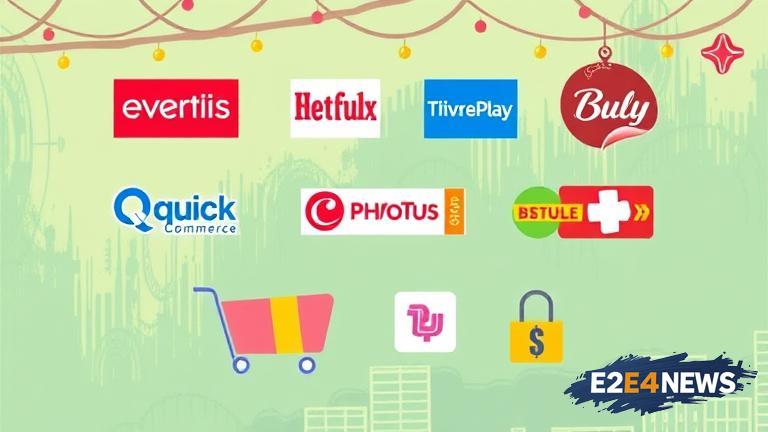The Indian e-commerce market is witnessing a significant trend, with direct-to-consumer (D2C) brands increasingly opting to list their products on quick commerce platforms. This shift is largely driven by the desire to tap into the growing demand for fast and convenient delivery options, particularly during the festive season. With the festive season just around the corner, D2C brands are eager to expand their reach and increase sales. Quick commerce platforms, which offer delivery within a short span of time, often within 30 minutes to an hour, are becoming the preferred choice for these brands. The likes of Dunzo, Swiggy, and Zomato are among the popular quick commerce platforms that D2C brands are partnering with. These platforms have already gained significant traction in the market, with millions of users relying on them for their daily needs. By listing their products on these platforms, D2C brands can leverage the existing customer base and infrastructure, thereby reducing their operational costs and increasing their market reach. Moreover, quick commerce platforms offer a range of benefits, including real-time tracking, flexible payment options, and a seamless shopping experience. As a result, D2C brands are able to focus on their core strengths, such as product development and marketing, while leaving the logistics and delivery to the quick commerce platforms. The festive season, which typically begins in October and lasts until December, is a critical period for e-commerce companies in India. During this time, consumers tend to increase their spending, and e-commerce platforms witness a significant surge in sales. By partnering with quick commerce platforms, D2C brands can ensure that their products are delivered quickly and efficiently, thereby enhancing the overall shopping experience for their customers. Furthermore, quick commerce platforms are also investing heavily in marketing and advertising, which can help increase visibility and drive sales for D2C brands. In addition to the benefits mentioned earlier, quick commerce platforms also offer D2C brands the opportunity to collect valuable data and insights on consumer behavior and preferences. This data can be used to inform product development, marketing strategies, and supply chain optimization, ultimately leading to improved customer satisfaction and loyalty. The trend of D2C brands partnering with quick commerce platforms is expected to continue in the coming months, with more brands likely to join the fray. As the e-commerce market in India continues to evolve, it will be interesting to see how D2C brands and quick commerce platforms work together to create new and innovative shopping experiences for consumers. The growth of quick commerce platforms is also expected to drive innovation in the logistics and supply chain space, with companies investing in new technologies and infrastructure to support fast and reliable delivery. In the long run, the partnership between D2C brands and quick commerce platforms is likely to have a positive impact on the overall e-commerce ecosystem in India, driving growth, innovation, and customer satisfaction. With the festive season approaching, D2C brands and quick commerce platforms are gearing up to offer consumers a range of exciting deals, discounts, and promotions. As the demand for quick commerce continues to grow, it is likely that we will see new players entering the market, and existing players expanding their services to new areas. The Indian government has also been supportive of the e-commerce sector, implementing policies and initiatives aimed at promoting growth and innovation. The future of e-commerce in India looks promising, with D2C brands and quick commerce platforms playing a key role in shaping the industry. As consumers become increasingly demanding, e-commerce companies will need to continue innovating and improving their services to stay ahead of the competition. The rise of quick commerce platforms is a testament to the evolving nature of the e-commerce industry, and it will be exciting to see how this trend continues to unfold in the coming months and years.





